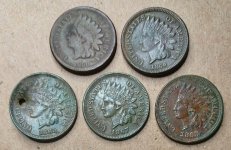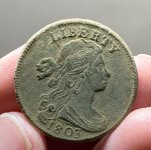Hi all -
I've been researching an old unsolved treasure-hunt from 1982 called "The Secret" by Byron Preiss (paperback). There's a theory that there's a unique decorated ceramic box buried somewhere in New Orleans, and I have an idea it might be near the entrance to Louis Armstrong park. I'm in the UK, but I was hoping to contact someone local who might be interested in trying to find it.
Byron buried twelve of these around the US , but only two were ever recovered. There used to be a jewel prize for finding them, though he's not around any more so there's just the box. It would be an intruiging souvenir though. (They were made by the New York sculptress JoEllen Trilling.)
I've put together some notes on this puzzle here:
http://www.lemontiger.co.uk/images/misc/thesecret/neworleans.pdf
Is there anyone in New Orleans who might be interested in taking a look next to that arch to see if there's a spot where something could have been buried...? (I'm not sure how much this area has changed since 1982, or what flood damage there might have been at this location.)
Ben
I've been researching an old unsolved treasure-hunt from 1982 called "The Secret" by Byron Preiss (paperback). There's a theory that there's a unique decorated ceramic box buried somewhere in New Orleans, and I have an idea it might be near the entrance to Louis Armstrong park. I'm in the UK, but I was hoping to contact someone local who might be interested in trying to find it.
Byron buried twelve of these around the US , but only two were ever recovered. There used to be a jewel prize for finding them, though he's not around any more so there's just the box. It would be an intruiging souvenir though. (They were made by the New York sculptress JoEllen Trilling.)
I've put together some notes on this puzzle here:
http://www.lemontiger.co.uk/images/misc/thesecret/neworleans.pdf
Is there anyone in New Orleans who might be interested in taking a look next to that arch to see if there's a spot where something could have been buried...? (I'm not sure how much this area has changed since 1982, or what flood damage there might have been at this location.)
Ben




















